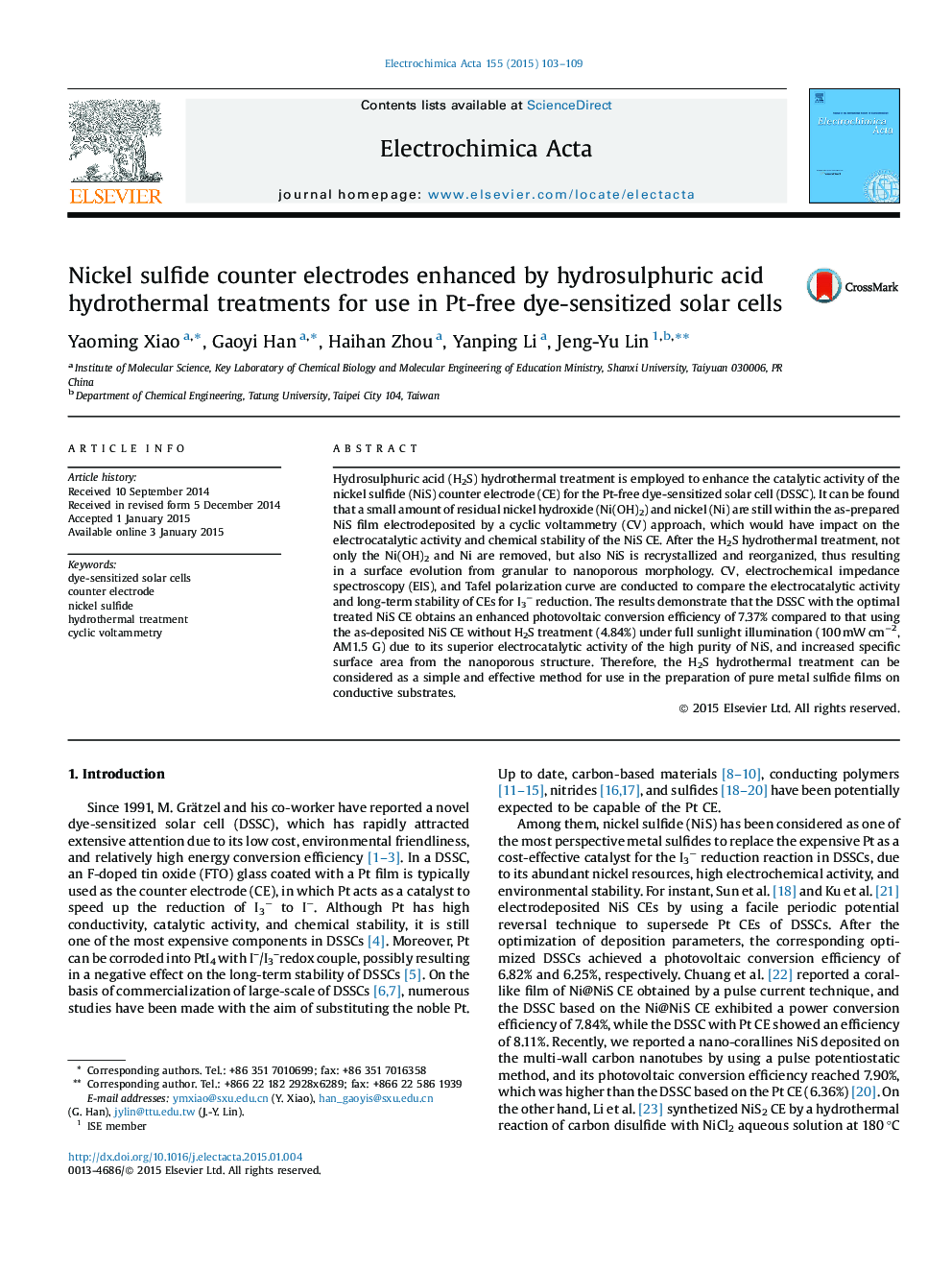| Article ID | Journal | Published Year | Pages | File Type |
|---|---|---|---|---|
| 184554 | Electrochimica Acta | 2015 | 7 Pages |
•H2S treatment is employed to purify the NiS film to enhance the long-term stability.•H2S treatment forms nanoporous NiS counter electrode with high catalytic activity.•The efficiency of the DSSC with the treated NiS counter electrode (CE) reaches 7.37%.
Hydrosulphuric acid (H2S) hydrothermal treatment is employed to enhance the catalytic activity of the nickel sulfide (NiS) counter electrode (CE) for the Pt-free dye-sensitized solar cell (DSSC). It can be found that a small amount of residual nickel hydroxide (Ni(OH)2) and nickel (Ni) are still within the as-prepared NiS film electrodeposited by a cyclic voltammetry (CV) approach, which would have impact on the electrocatalytic activity and chemical stability of the NiS CE. After the H2S hydrothermal treatment, not only the Ni(OH)2 and Ni are removed, but also NiS is recrystallized and reorganized, thus resulting in a surface evolution from granular to nanoporous morphology. CV, electrochemical impedance spectroscopy (EIS), and Tafel polarization curve are conducted to compare the electrocatalytic activity and long-term stability of CEs for I3− reduction. The results demonstrate that the DSSC with the optimal treated NiS CE obtains an enhanced photovoltaic conversion efficiency of 7.37% compared to that using the as-deposited NiS CE without H2S treatment (4.84%) under full sunlight illumination (100 mW cm−2, AM1.5 G) due to its superior electrocatalytic activity of the high purity of NiS, and increased specific surface area from the nanoporous structure. Therefore, the H2S hydrothermal treatment can be considered as a simple and effective method for use in the preparation of pure metal sulfide films on conductive substrates.
Graphical abstractH2S hydrothermal treatment is employed not only to purify the NiS film resulting in a long-term stability, but also to convert the NiS nanoparticles to a nanoporous structure enhancing the specific surface area and then leading to a high electrocatalytic activity. The DSSC with the optimal treated NiS CE obtains an enhanced photovoltaic conversion efficiency of 7.37%, which increases by 52.3% than that using as-deposited NiS CE without H2S treatment (4.84%).Figure optionsDownload full-size imageDownload as PowerPoint slide
